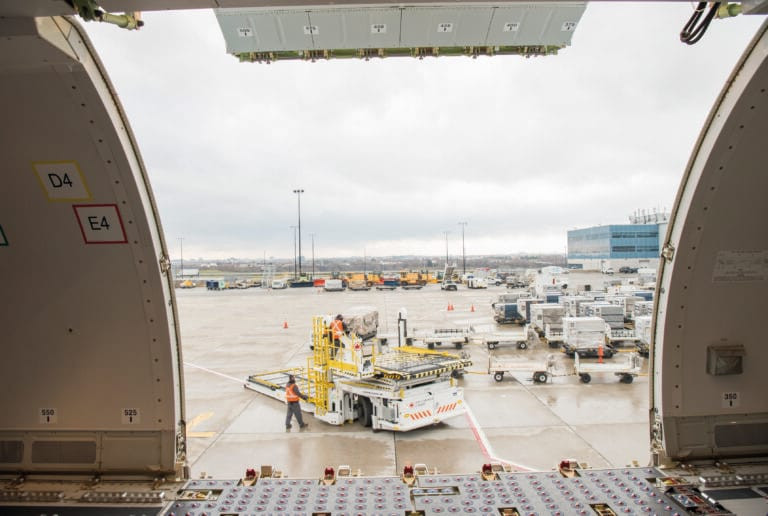Airlines, logistics providers, and industry stakeholders are continuously adapting to maintain efficiency while ensuring the flexibility needed to meet shifting market needs. However, challenges remain—from the complexities of handling specialised cargo to the need for more sustainable and digitally integrated supply chains.
“Although the European market had a noticeable decline early last year, it has since stabilised, leading to a positive outlook for the region,” Matthieu Casey, Managing Director – Commercial at Air Canada Cargo, said.
“Key trends driving this growth include a significant rise in e-commerce, fuelled by the rapid growth of online shopping, which has heightened the demand for efficient logistics solutions.”
With the surge in demand for fast, efficient deliveries, major air cargo hubs like Frankfurt and Amsterdam have been forced to expand their warehousing capacities and handling infrastructure. The challenge, however, lies in maintaining service reliability while managing constraints on capacity, particularly as global supply chains remain under pressure from shifting trade patterns and geopolitical factors. One of the most significant challenges in European airfreight is ensuring the safe and efficient transport of specialised goods, such as pharmaceuticals, perishables, and high-value commodities.
“We’ve significantly invested in enhancing our operational capabilities, including the recent upgrades to our cold chain facility at London Heathrow (LHR), which improves our ability and increases our capacity to handle temperature-sensitive products,” Casey noted.
Maintaining precise temperature control is crucial for sectors like pharmaceuticals, where even slight fluctuations can result in product spoilage. As the demand for such cargo increases, airlines must implement advanced monitoring systems and ensure staff are trained to handle sensitive shipments.
The expansion of cold chain logistics is an industrywide focus, with carriers and airports investing in infrastructure to meet stricter regulatory and quality standards. e-commerce has rapidly reshaped the landscape of air cargo, driving higher volumes of shipments and requiring logistics providers to enhance speed, efficiency, and visibility.
“The sector is experiencing a transformation where flexibility, visibility, and speed are becoming increasingly paramount in serving the evolving needs of the market,” said Casey. The challenge, however, lies in ensuring that infrastructure can keep pace with demand. Sorting hubs are evolving beyond serving only large integrators, with new facilities emerging to support regional last-mile carriers. More dedicated freighter services are also being introduced to facilitate cargo movement from the EU to key markets in the Middle East, Asia, the US, and Latin America. The need for real-time tracking and seamless digital integration is becoming increasingly essential to meet customer expectations for transparency and reliability.
One of the biggest operational challenges in air cargo is ensuring that networks remain resilient while adapting to market fluctuations.
“Our belly capacity and freighter network are incredibly complementary,” Casey said. “We connect 750 city pairs with widebody and freighter services between Europe and the Americas, including South and Central America, the Caribbean, and North America.”
This adaptability is key in ensuring that capacity can be shifted as demand fluctuates, especially during peak seasons. However, maintaining high service reliability remains a challenge, particularly as disruptions—ranging from labour shortages to geopolitical uncertainties—can impact scheduling and efficiency.
To mitigate this, airlines are increasingly centralising key functions. “By centralising key stakeholders such as Flight Dispatch, Maintenance Control, and Crew Scheduling, we ensure smooth communication and rapid response to challenges,” Casey noted.
As the industry adapts to growing demand, environmental sustainability is becoming an increasingly pressing concern. Air Canada’s Leave Less Travel Program offers corporate cargo customers the option to address the Scope 3 greenhouse gas (GHG) emissions related to their freight transportation using sustainable aviation fuel (SAF) environmental attributes, carbon offset credits or a combination of both. The program can support cargo customers in achieving their own GHG reduction goals.
Beyond environmental sustainability, automation, AI, and the Internet of Things (IoT) are revolutionising logistics operations. The demand for data-driven services that optimise routes, manage capacity, and minimise delays is growing, highlighting the importance of predictive analytics and AI-driven efficiency models.



